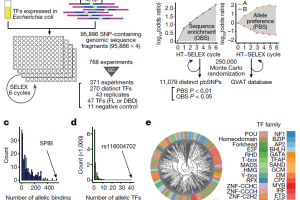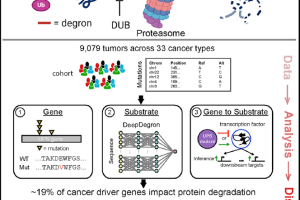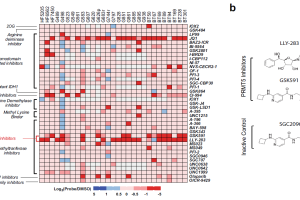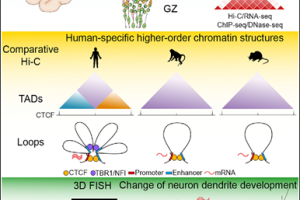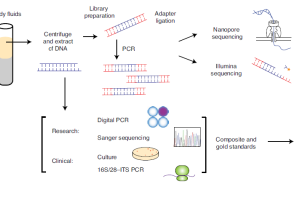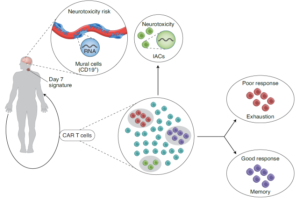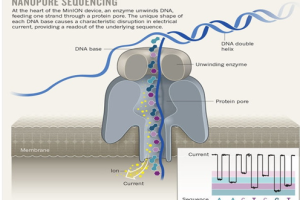- R&D
- Clinical Diagnosis
- News
- Company
QuickBiology News
News Center
Here are relevant industry news and updates on our company
Genome-wide association studies (GWAS) have implicated hundreds of thousands of single-nucleotide polymorphisms (SNPs) in human diseases and traits, but very few of them have been functionally characterized. Most of these disease or trait-associated SNPs are in the intron region (i.e., non-coding region) or intergenic region, which makes it harder to interpret whether they are true causal genetic sites or just hitch-hiking genetic variants. Read More
The Ubiquitin/Proteasome System (UPS) is a highly regulated mechanism of intracellular protein degradation and turnover, plays major roles in a variety of basic pathways during cell life and death. The UPS is also an attractive target for novel cancer therapies, however, the precise UPS genes and substrates important for cancer growth are not completely understood.Read More
Glioblastoma Multiforme (GBM) accounts for about 15% of all intracranial tumors and about 60% of astrocytic tumors, it often occurs between the age of 45 and 70. Although it is rare, with the incidence of 2-3 new cases per 100,000 people in the United States and Europe, patients with GBM have a dismal prognosis, usually survive less than 15 months with standard-of-care therapy, and survival without treatment (at least surgery) is only 4-6 months. Previous work mainly focused on the role of genes on GBM survival or on the maintenance of glioblastoma stem cells (GSCs). Read More
Elucidating the regulatory mechanisms of human brain evolution is essential to understanding human cognition and mental disorders. The levels in the genomic sequence, gene expression, pre-mRNA splicing have been extensively studied between human and nonhuman primates. However, the chromatin structure---- this higher order of genome interaction map is less well known, especially across different primates’ species.Read More
The major challenge of third-generation sequencing (i.e. PacBio and Nanopore sequencing) is the high sequencing error rate, PacBio has 10-15% while Nanopore is 5-20%. Although Illumina allows rapid, cheap, and accurate sequencing, its short reads (usually < 300 bp) doesn’t enable complete genome assembly or intact full-length mRNA transcriptome analysis. Scientists have developed hybrid assembly pipelines by combing long-reads for contig formation and short-reads for nucleotide accuracy to improve de novo genome assembly.Read More
Early detection of causative microorganisms in patients with severe infection is critical to informing clinical interventions and the administration of appropriately targeted antibiotics. The traditional culture-based method is time-consuming (taking days or even weeks), especially some microorganisms are unculturable in a lab setting. PCR tests using conserved 16S ribosomal RNA gene and 28S-ITS PCR regions of bacteria and fungi, respectively have low sensitivity of genus/species level. Specifical clinical tests only focusing on certain pathogens makes it impossible for discovering unknown pathogens as most infectious syndromes present with indistinguishable clinical manifestations.Read More
Cancer immunotherapy like chimeric antigen receptor (CAR) T cells has been approved and used in blood and bone marrow cancer. Although CAR-T therapy is much more powerful and promising in these types of cancers, long-term remissions are still observed in < 50% of patients.Read More
In 2020, The Royal Swedish Academy of Sciences awarded the Nobel Prize in Chemistry 2020 to Emmanuelle Charpentier and Jennifer A. Doudna, who have discovered CRISPR/Cas9 system, a genetic scissor for rewriting the code of life. David Liu’s lab at the Broad Institute of MIT & Harvard has been inventing new CRISPR gene-editing systems without double-strand DNA break in CRISPR/Cas9 system. In 2016, they invented “base editing”, which seamlessly does four transition editing (C to T, G to A, A to G, and T to C). In 2019, they gave the world “prime editing”, which is devised to achieve all 12 base-to-based conversions, in addition, it can mediate targeted insertions and deletions. Read More
Chronic lymphocytic leukemia (CLL) is a disease that remains incurable by conventional chemotherapy. SF3B1 is a splicing factor, a core component of the U2 snRNP of the spliceosome, and associates with the U2 snRNA and branch point adenosine of the pre-mRNA. Recurrent somatic mutations in SF3B1 have been linked to CLL. In CLL, mutations in the heat-repeat domain of SF3B1 is shown to associate with poor clinical outcome. Previous whole transcript profiling mainly focused on exon level using Illumina short reads NGS platform. The extent to which full-length isoforms contribute to such disease due to splicing regulator SF3B1 mutations are not well characterized. Read More
Stem cell therapy or regenerative medicine promotes the repair response of diseased, injured, or dysfunctional tissues using stem cells. The important biosafety for the use of human pluripotent stem cells is to make sure there are not any mutations, especially in genes associated with cancer that occurred during stem cell in vitro propagation. Read More








